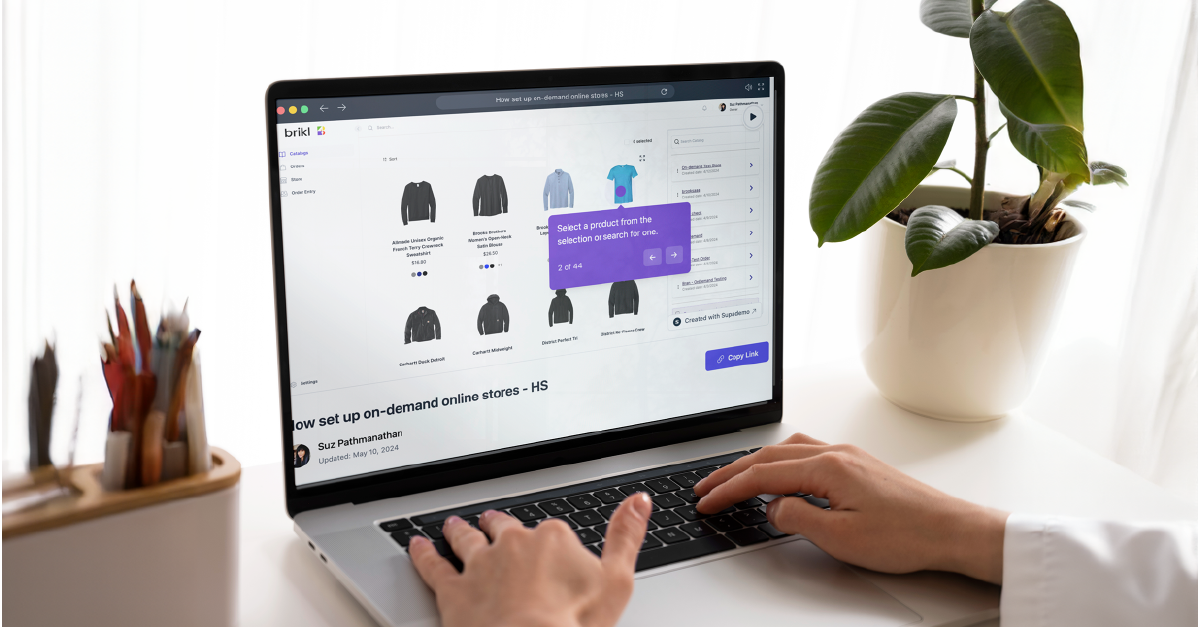3 min read
Maximize Sales Growth with On-Demand Stores Webinar Wrap Up
Suz Pathmanathan
:
Apr 30, 2024 5:20:46 AM

The discussion was eye-opening, revealing the inefficiencies that have long plagued the industry. Danielle’s anecdote about a top distributor who admitted that six humans were involved in processing every single order laid bare the cumbersome, error-prone processes businesses are contending with. This scenario is far from unique and illustrates a pervasive issue across the industry. Such practices not only slow down operations but significantly impact the bottom line. The realization hits hard; while revenues might be growing, profits are being eroded by inefficiencies and outdated practices.
The webinar didn’t just highlight problems; it showcased potential solutions, emphasizing the transformative power of integration and automation. The conversation pivoted to a powerful case study demonstrating the stark contrast in processing costs between traditional methods and those leveraging integrated systems. The difference is staggering—what costs a top distributor $20 to process can be done for a mere dollar through FAST automation. This isn’t just about cutting costs; it’s about reimagining operations to be leaner, faster, and more error-resistant.
A critical part of the discussion focused on the human element inherent in the industry’s processes. Acknowledging human fallibility isn’t a weakness but a call to action for implementing systems that minimize errors, streamline operations, and ultimately enhance the client experience. The potential for automation to transform the industry is immense, offering a path to operations that are more efficient and profitable.
The future of the promotional products industry is one where Brikl automation and integration play central roles. The speakers outlined Brikl’s “pizza tracker” for promotional products, where the entire process, from customer acquisition to order fulfillment, is automated. This vision promises not only operational efficiencies but also a vastly improved customer experience. In this future, every step of the order process is transparent, and clients can easily track their orders’ progress, mirroring the simplicity and efficiency of ordering a pizza online.
However, the conversation took an even more forward-looking turn when addressing the demographic changes within the industry. The next generation, digital natives, view the industry’s current technological posture with skepticism. This generation’s reluctance to engage with outdated systems underscores the urgency for the industry to evolve. The webinar posited that leveraging digital platforms, such as social media, is essential not just for marketing but as an integral part of the sales and fulfillment process.
The path forward is clear: embrace automation and integration to streamline operations, reduce errors, and improve the client experience. This isn’t just about keeping pace with technological advancements; it’s about redefining what’s possible in the industry.
The Implications of this Shift are Profound
But beyond the operational benefits, the move towards automation and integration speaks to a broader trend in the industry: the drive towards sustainability. By streamlining processes and reducing the need for physical paperwork and manual processing, the industry can significantly lower its environmental footprint. This shift isn’t just good for business; it’s good for the planet.

Moreover, as the industry looks to the future, it must consider the broader ecosystem in which it operates. The rise of e-commerce and the increasing demand for on-demand products have set new expectations for speed and flexibility. To meet these demands, the promotional products industry must adopt more agile and responsive operational models. Automation and integration are not merely tools for efficiency; they are the keys to unlocking new market opportunities and meeting the evolving needs of customers.
Brikl’s Dan Vermont also touched on the importance of building a robust digital infrastructure to support these changes. This includes investing in cloud-based systems, data analytics, and machine learning algorithms that can predict customer behavior, optimize inventory management, and personalize the customer experience. These technologies are not just about reducing costs; they are about creating value for customers and differentiating businesses in a competitive market.
The promotional products industry stands at a pivotal moment. The challenges are clear, but so are the opportunities. By embracing automation and integration, businesses can not only improve their operational efficiency but also position themselves for future growth. The path forward will require courage, investment, and a willingness to innovate. But the rewards will be substantial for those who dare to embrace the future. The future of the promotional products industry is digital, integrated, and automated. The time to act is now.





